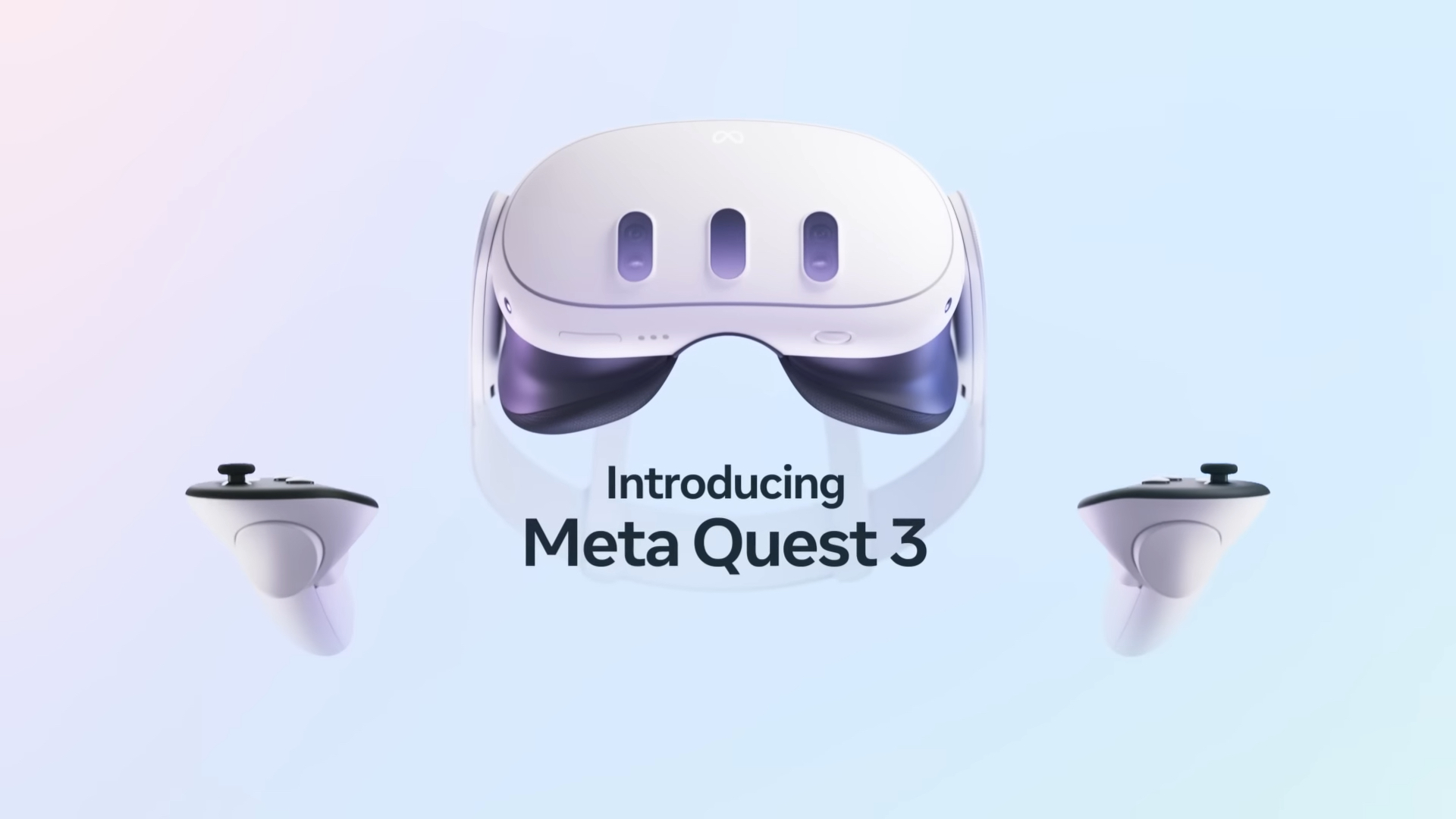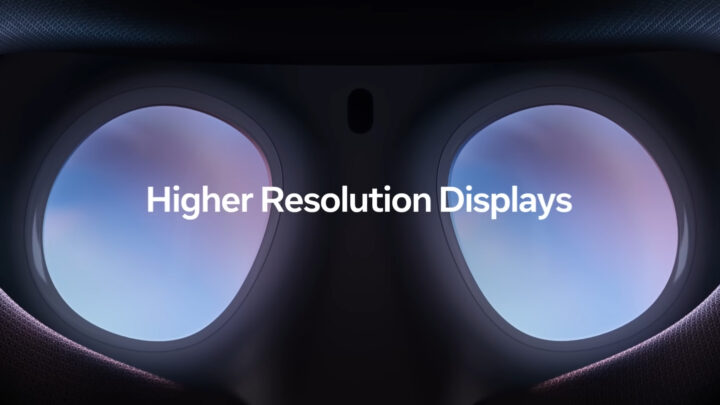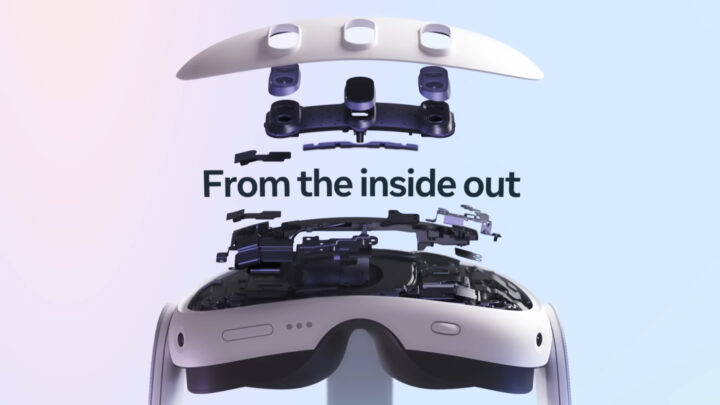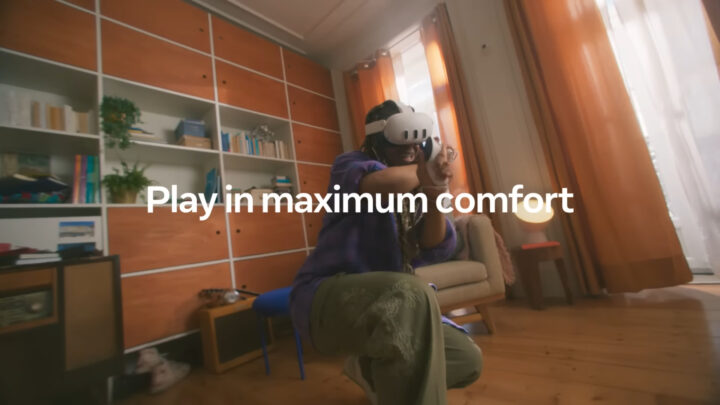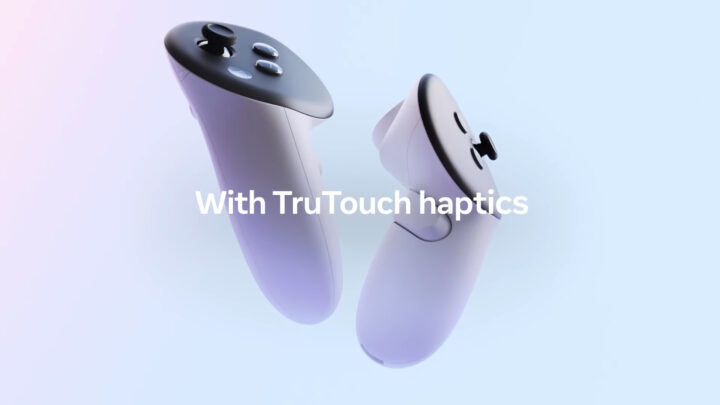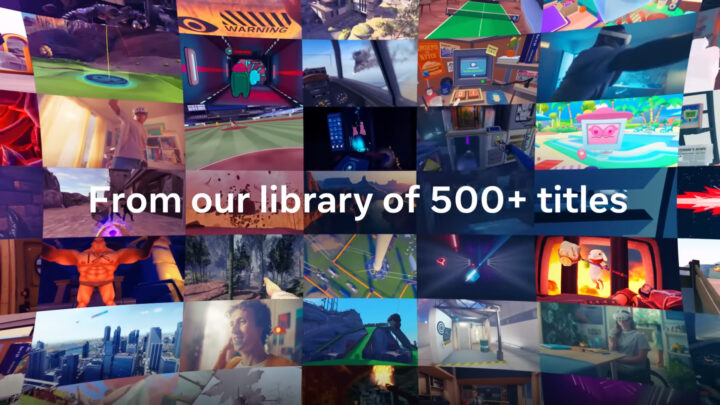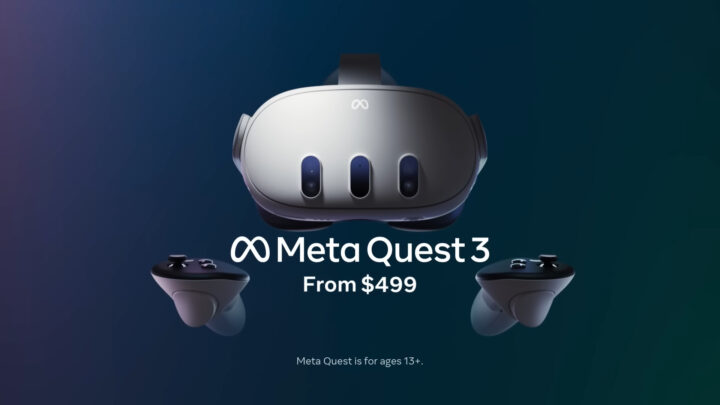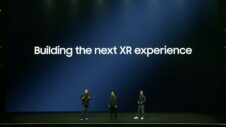Meta has launched Quest 3, a virtual and mixed-reality headset, similar to the Apple Vision Pro and Samsung’s upcoming XR headset. It succeeds the Quest 2 which was released in 2020. Compared to the previous version, the Quest 3 offers higher-resolution displays, faster performance, a new set of cameras, a smaller and more comfortable headset, new controllers, and improved software. Meta has priced the Quest 3 at $499 for the 128GB model and $649.99 for the 512GB model in the US. The new VR and MR headset from Meta is available for pre-order and the company will start shipping it from October 10, 2023.
Sharper displays, slimmer lenses, and wider FoV
Starting with the displays, the Quest 3 features two LCD panels, one for each eye, with a 2,208 x 2,064 pixels resolution and a 120Hz refresh rate. That’s a 30% increase in the resolution compared to the Quest 2, offering 1,218 PPI pixel density. However, the 120Hz refresh rate mode is still in the experimental stage. For a stable performance, you have to use a 90Hz refresh rate.
These displays offer 110-degree horizontal and 96-degree vertical field of view, which is a 15% increase over that of the previous model. These are pancake-style lenses, similar to those in the mixed reality headset from Apple, offering a slimmer optic profile. You can adjust the Inter Pupillary Distance of lenses from 58mm to 71mm using a wheel on the outside of the headset.
Powered by Qualcomm Snapdragon XR2 Gen 2
The Quest 3 is powered by the Qualcomm Snapdragon XR2 Gen 2. According to Meta, it offers double the GPU performance compared to the Snapdragon XR2 Gen 1, which you find in the Quest 2. This GPU offers “faster load times and more seamless gameplay” and the new SoC brings “enough power to support heavy applications like fast-action gaming, seamless full-colour, high-resolution passthrough, and so much more”. There’s 8GB RAM onboard, and as mentioned earlier, you get 128GB and 512GB storage options.
Two full-colour cameras, one depth sensor, and four IR cameras
Unlike the previous model, the Quest 3 offers two RGB cameras and a depth sensor for “improved depth and resolution”. The new cameras, along with the powerful SoC, enable mixed reality passthrough. That means you can see what’s around you in the real world in the headset, just like the Apple Vision Pro. According to Meta, the passthrough latency is just 12 milliseconds. There are also four IR cameras on the headset for recognising gestures which eliminates the need for controllers but we’ll talk about this later.
Smaller but heavier and more comfortable headset
Even though the Quest 3 has a smaller footprint than the Quest 2, it is heavier than the previous model (515 grams versus 503 grams). However, Meta says that the new headset offers “more comfortable wear”. The Quest 3 has a soft adjustable strap that “accommodates a variety of head shapes and hairstyles”. However, you can get a hard strap separately at an additional cost. These straps allow you to move the headset far from or closer to your face to “improve comfort and field of view”.
Redesigned controllers and new games
The Quest 3 comes with two Touch Plus controllers. These don’t have the ring for tracking the controllers in the 3D space found on the Touch controllers that you get with the Quest 2. So, it’s unclear at the moment how Meta is tracking the new controllers in the three-dimensional space. According to Meta, The Touch Plus controllers have improved haptic feedback, which should offer a better gaming experience.
Speaking of games, the Quest 3 supports the whole catalogue of games that the Quest 2 does, which contains over 500 VR titles. Plus, Meta is releasing new games with this headset, including three AAA titles. Two of them are Assassin’s Creed Nexus and Asgard’s Wrath. The company is marketing the Quest 3 as a gaming device primarily. However, Meta says that the new headset will also be very useful for fitness.
Same battery life as Quest 2
According to Meta, the Quest 3 offers 1.5 hours to 2.9 hours of usage on a single charge, depending upon the task you are performing. These figures are similar to those for the Quest 2. The company claims that the new headset can charge from 0% to 100% in approximately 2.3 hours. Fortunately, it comes with an 18W power adapter in the box. Connectivity options include Wi-Fi 6E, and it is worth mentioning that the headset does not feature eye tracking.
What does Meta Quest 3 mean for Samsung’s upcoming XR headset?
Samsung’s upcoming XR (Extended Reality) headset, which the company is developing with Google and Qualcomm, already had to fight against the Apple Vision Pro. The launch of Meta Quest 3 makes the competition even tougher for the Samsung XR. It will not only have to fight with the Apple Vision Pro on the features-front but also with the Quest 3 on the price-front.
